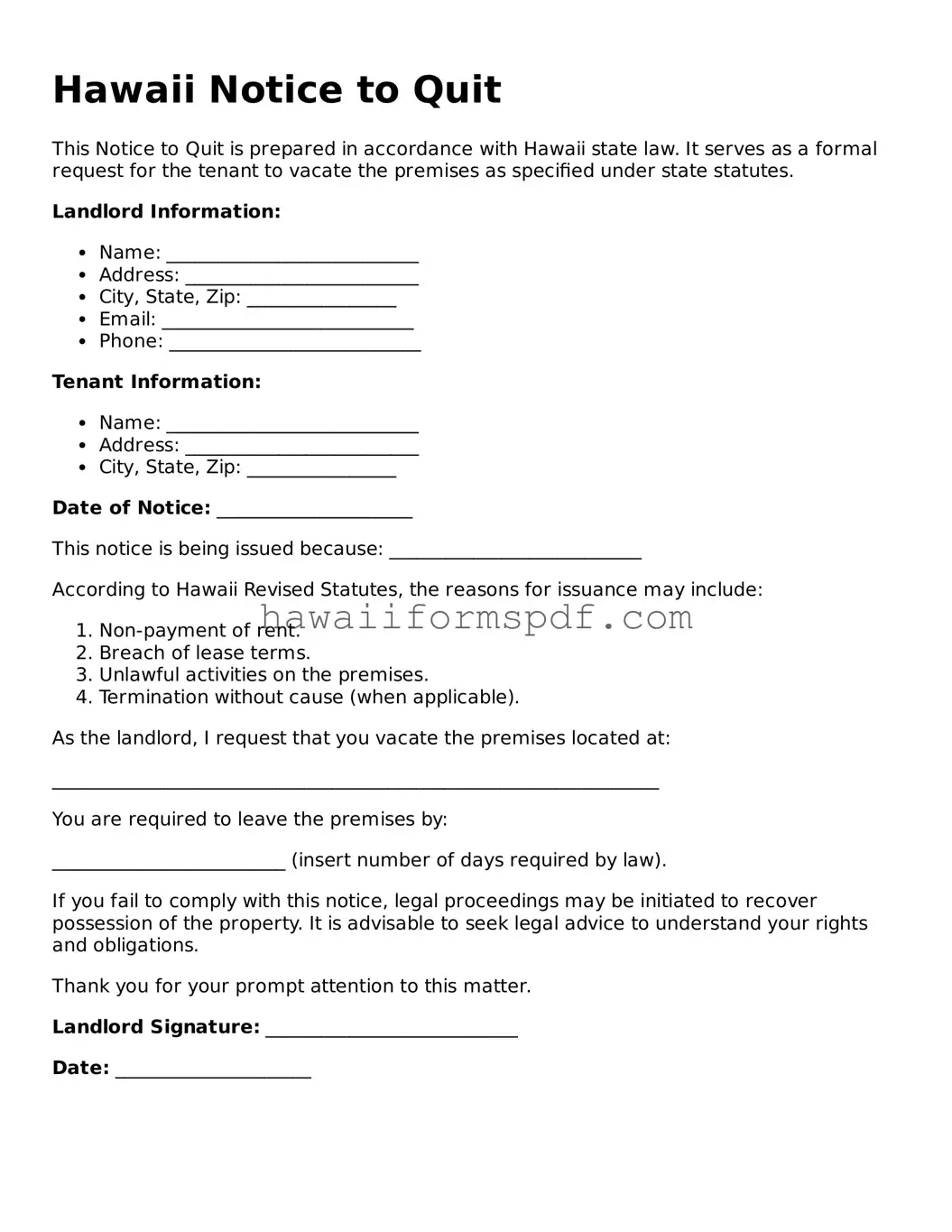Hawaii Notice to Quit
This Notice to Quit is prepared in accordance with Hawaii state law. It serves as a formal request for the tenant to vacate the premises as specified under state statutes.
Landlord Information:
- Name: ___________________________
- Address: _________________________
- City, State, Zip: ________________
- Email: ___________________________
- Phone: ___________________________
Tenant Information:
- Name: ___________________________
- Address: _________________________
- City, State, Zip: ________________
Date of Notice: _____________________
This notice is being issued because: ___________________________
According to Hawaii Revised Statutes, the reasons for issuance may include:
- Non-payment of rent.
- Breach of lease terms.
- Unlawful activities on the premises.
- Termination without cause (when applicable).
As the landlord, I request that you vacate the premises located at:
_________________________________________________________________
You are required to leave the premises by:
_________________________ (insert number of days required by law).
If you fail to comply with this notice, legal proceedings may be initiated to recover possession of the property. It is advisable to seek legal advice to understand your rights and obligations.
Thank you for your prompt attention to this matter.
Landlord Signature: ___________________________
Date: _____________________
